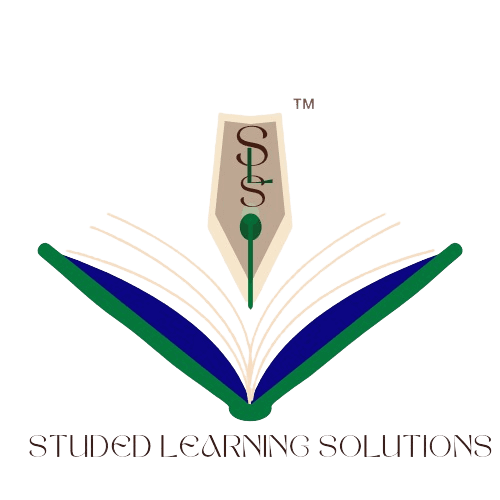Introduction
Plagiarism is a big problem in writing and school. It happens when someone uses another person’s words or ideas without saying where they got them. It’s like taking someone else’s work without permission. Knowing what plagiarism is and how to stop it is really important for everyone who writes, whether it’s for school, work, or just for fun. In this article, we’ll talk about what plagiarism is, why it’s bad, how to spot it, and, most importantly, how to avoid it. Let’s learn about plagiarism together so we can do our writing the right way!
What is Plagiarism?
Plagiarism is when you use someone else’s work without giving them credit. In academic writing, it happens when you use words, ideas, or information from a source without saying where you found it. This can occur by copying someone’s words without crediting them. Changing someone’s words slightly without acknowledging the original idea. Using someone’s ideas or information without citing the source. These actions are plagiarism because they take credit for others’ work. Always give credit to the people behind the ideas you use, whether it’s for school or online sharing.
Some of the most common examples of plagiarism are listed below:
| Examples of Plagiarism | Why is it Wrong? |
| Copying parts of a text word for word, without quotation marks | It makes it seem like these are your own words. |
| Paraphrasing a text by changing a few words or altering the sentence structure, without citing the source | It makes it seem like you came up with the idea, when in fact you just rephrased someone else’s idea. |
| Giving incorrect information about a source | If readers can’t find the cited source, they can’t check the information themselves. |
| Quoting so much from a source that it makes up the majority of your text | Even with proper citations, you’re not making an original contribution if you rely so much on someone else’s words. |
| Reusing work you’ve submitted for a previous assignment, without citing yourself | Even though it’s your own work, the reader should be informed that it’s not completely new but comes from previous research. |
| Submitting a text written entirely by someone else (e.g., a piece of paper you bought from a ghostwriter) | Not doing the work yourself is academically dishonest, undermines your learning, and is unfair to other students. |
Types of Plagiarism
Plagiarism, which means passing off someone else’s work as your own, comes in various forms. Understanding these types of plagiarism is crucial to avoiding academic dishonesty.
Here are the common types explained with examples:
- Complete plagiarism: This occurs when someone submits another person’s work as their own entirely. For instance, turning in a research paper written by someone else.
- Direct Plagiarism: In direct plagiarism, specific sections or paragraphs from a source are included in one’s work without giving credit. For example, copying lines from a website into an essay without citation.
- Paraphrasing Plagiarism: This happens when a writer rephrases someone else’s work without proper citation. Even if the words are changed, presenting another’s original idea without credit is plagiarism.
- Selfplagiarism: Surprisingly, one can plagiarise their own work. Reusing content from a previous work without citation, like using an old essay in a new assignment, is self-plagiarism.
- Patchwork Plagiarism: Also known as mosaic plagiarism, this involves interweaving plagiarised work with original content. For instance, blending a clause from a source into one’s own sentence.
- Source-Based Plagiarism: This type involves citing sources but doing so misleadingly. For example, referencing a secondary source but only crediting the primary source.
- Accidental plagiarism: often overlooked, this type occurs unintentionally, such as by forgetting to cite sources, making improper citations, or failing to use quotation marks when necessary.
What Makes Plagiarism the Wrong Thing?
Plagiarism is wrong for several reasons. Here’s why:
- Intellectual theft: Plagiarism involves stealing someone else’s ideas, words, or work without permission or proper credit. It’s like taking something that doesn’t belong to you.
- Academic dishonesty: In educational settings, plagiarism undermines the integrity of learning. It deceives teachers, professors, and peers by presenting someone else’s work as your own, which is unfair and dishonest.
- Violation of ethics: Plagiarism goes against the ethical principles of honesty, integrity, and fairness. It breaches the trust between writers, readers, and the community.
- Stifles creativity: Plagiarism discourages original thinking and creativity. Instead of generating new ideas or contributing unique insights, plagiarists rely on the work of others, hindering their own growth and development.
- Legal implications: Plagiarism can have legal consequences, especially in cases of copyright infringement. Using someone else’s work without permission may result in lawsuits or other legal actions.
- Loss of reputation: Plagiarism damages the reputation of the plagiarist. It undermines their credibility, professionalism, and trustworthiness in academic, professional, and personal spheres.
- Educational impact: Plagiarism deprives individuals of the opportunity to learn and grow. It hampers critical thinking, research skills, and academic progress, hindering personal and professional development.
How to Avoid Plagiarism?
Avoiding plagiarism is crucial in academic and professional writing.
Here are some simple steps to help you steer clear of plagiarism:
- Keep track of your sources: Make sure to record the sources you use during your research. This includes books, articles, websites, and any other materials you consult.
- Paraphrase or quote:
When using information from your sources, rephrase it in your own words (paraphrase) or use quotation marks for direct quotes. Adding your own analysis or interpretation also helps to demonstrate your understanding.
- Credit the original author: Always provide proper credit to the original author by including in-text citations whenever you use their ideas or words. Additionally, include a reference list at the end of your document to list all the sources you cited.
- Use a plagiarism checker. Before submitting your work, run it through a plagiarism checker to ensure that you haven’t inadvertently plagiarized any content. These tools can help identify any potential issues that need to be addressed.
- Use generative AI tools responsibly
If using AI tools to generate content, be cautious and ensure that the outputs are your own work. Some AI-generated content may be flagged as plagiarism by detection software, so use these tools responsibly and verify the originality of your work.
Remember, even accidental plagiarism can have serious consequences, so it’s important to be diligent in properly attributing sources and integrating them into your writing. By following these steps, you can maintain academic and professional integrity while producing original and ethical work.
What Are the Consequences of Plagiarism?
Plagiarism has serious consequences that affect different areas of life.
- Student Reputation: Plagiarism can lead to expulsion from school, damaging a student’s academic record and future prospects.
- Professional Reputation: Professionals may lose their jobs or face difficulty finding new ones due to plagiarism allegations, tarnishing their reputation.
- Academic Reputation: Plagiarism allegations can ruin an academic’s career, especially in fields reliant on publishing.
- Legal Repercussions: Plagiarism violates copyright laws, resulting in potential legal action, fines, or imprisonment.
- Monetary Consequences: Plagiarists may have to pay fines or restitution to the original authors, impacting their finances.
- Research Impact: Plagiarising research, especially in critical fields like medicine, can have severe consequences, including endangering lives.
How to Check for Plagiarism?
Here are some of the top tools to remove plagiarism:
| Tool | Description |
| Turnitin | Turnitin is a widely used plagiarism detection software that checks documents against a vast database of academic content and internet sources. |
| Grammarly | Grammarly not only checks grammar and spelling but also has a plagiarism checker feature that scans text for any potential matches on the web. |
| Copyscape | Copyscape is an online plagiarism detection tool specifically designed for website content, helping website owners identify copied content. |
| Quetext | Quetext offers a free plagiarism checker tool that scans documents for duplicate content and provides a similarity score, highlighting any potential issues. |
| Plagiarism Checker X | Plagiarism Checker X is a comprehensive tool that scans documents for plagiarism across multiple databases and provides detailed reports on any detected matches. |
| DupliChecker | DupliChecker offers a user-friendly plagiarism checker tool that scans text for duplicate content and provides a percentage of similarity with external sources. |
Maintaining Good Writing Practice
Use a plagiarism checker: Tools like Quetext’s free plagiarism checker can help you ensure your work is original and free from plagiarism.
Keep a citation generator handy: Citation generators are essential for properly crediting sources in your writing.
Understand the importance: Plagiarism can have serious consequences for both you and the original authors. It’s crucial to take it seriously.
Be Proactive: Utilize these tools regularly to prevent unintentional plagiarism and maintain academic or professional integrity.
Commit to Ethical Writing: Commit to understanding plagiarism policies, giving credit where it’s due, and always producing original work.
Take Responsibility: Remember that plagiarism is a problem, but you have the power to avoid it. By taking responsibility for your writing practices, you can contribute to the solution rather than the problem.


